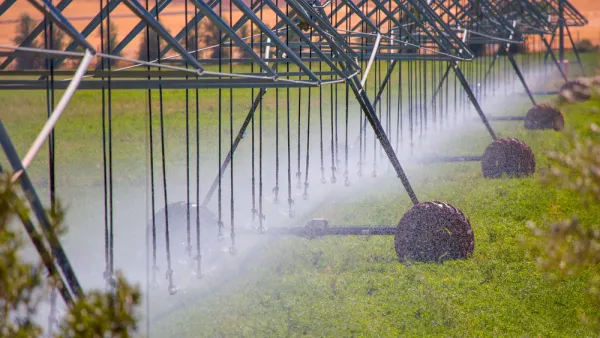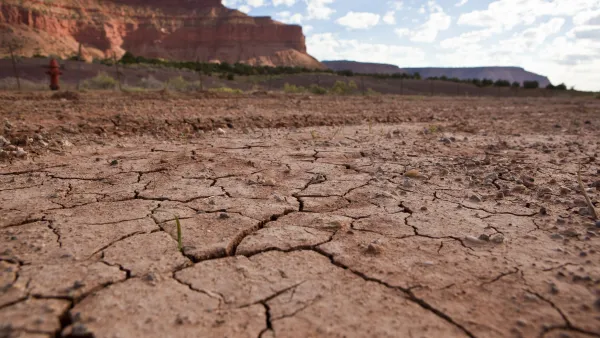Astride the maze of rivers east of San Francisco that crisscross California's Sacramento-San Joaquin Delta stand two imposing edifices — the pumping stations that supply water to vast swaths of the state. When operating at full throttle, the Harvey O. Banks Pumping Plant, managed by the state of California, and the U.S. Bureau of Reclamation's C.W. "Bill" Jones Pumping Plant, have the capacity to entirely reverse the flow on the delta tributaries upon which they sit.
"California is in a "state of drought," something Gov. Arnold Schwarzenegger made official in June when he issued directives calling for "immediate action" on conservation and enhanced supply. (About half of the state's developed water supply is used directly by people; the balance goes for environmental uses like maintaining wild rivers or endangered species.)
Beyond California's history of periodic drought, Heather Cooley, of the environmental advocacy-oriented Pacific Institute, said climate change predictions forecast "more severe" and "more frequent" dry spells.
She added that farmers are facing increasing competition for water from expanding cities and industries - and declining species.
A 2007 court ruling restricts pumping on the delta to protect an endangered fish species, the 2-inch-long delta smelt, once the most common fish in the delta but now in such dire shape that the accidental killing in the pumping plans could extinguish the species.
For all of these reasons, Mike Wade, executive director of California Farm Water Coalition, said many Central Valley farmers expect to see their water allocations for the current growing season reduced 30 percent or more. Some have decided to cut their losses and let their fields go fallow."
Thanks to Patrick Rollens
FULL STORY: If You Can't Raise the River, Modernize the Canal

National Parks Layoffs Will Cause Communities to Lose Billions
Thousands of essential park workers were laid off this week, just before the busy spring break season.

Retro-silient?: America’s First “Eco-burb,” The Woodlands Turns 50
A master-planned community north of Houston offers lessons on green infrastructure and resilient design, but falls short of its founder’s lofty affordability and walkability goals.

Delivering for America Plan Will Downgrade Mail Service in at Least 49.5 Percent of Zip Codes
Republican and Democrat lawmakers criticize the plan for its disproportionate negative impact on rural communities.

Test News Post 1
This is a summary

Test News Headline 46
Test for the image on the front page.

Balancing Bombs and Butterflies: How the National Guard Protects a Rare Species
The National Guard at Fort Indiantown Gap uses GIS technology and land management strategies to balance military training with conservation efforts, ensuring the survival of the rare eastern regal fritillary butterfly.
Urban Design for Planners 1: Software Tools
This six-course series explores essential urban design concepts using open source software and equips planners with the tools they need to participate fully in the urban design process.
Planning for Universal Design
Learn the tools for implementing Universal Design in planning regulations.
EMC Planning Group, Inc.
Planetizen
Planetizen
Mpact (formerly Rail~Volution)
Great Falls Development Authority, Inc.
HUDs Office of Policy Development and Research
NYU Wagner Graduate School of Public Service




























